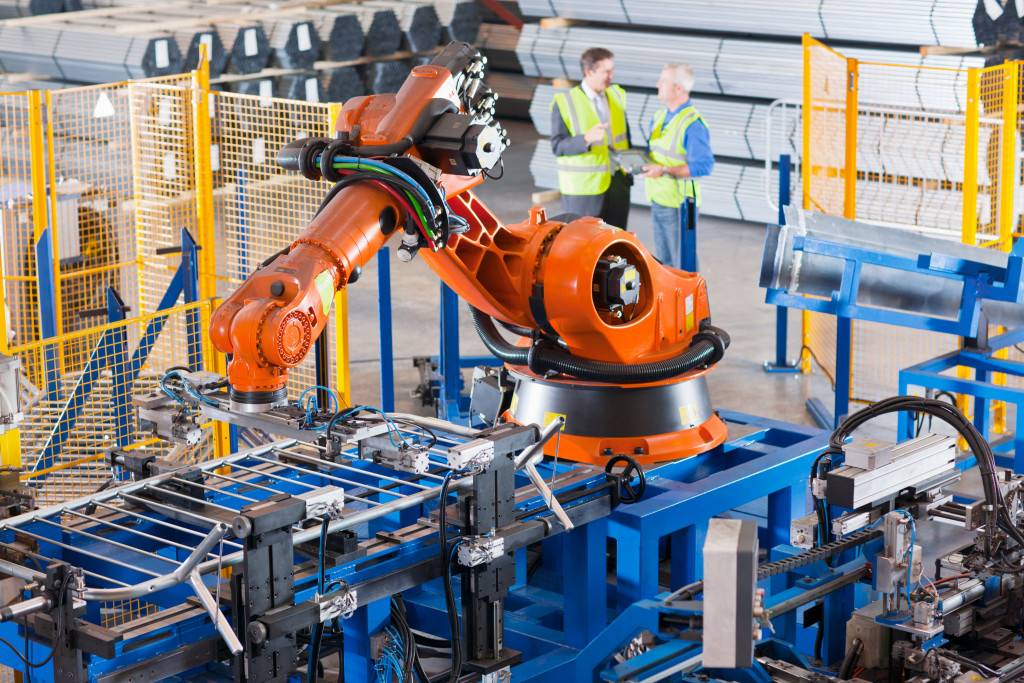The manufacturing industry is one of the most critical sectors in the United States economy. According to National Association of Manufacturers statistics, it accounted for $2 trillion in GDP and employs nearly 12 million workers. It is also a significant exporter, with exports totaling $1.3 trillion. As a result, it is one of the most profitable sectors, yet also among the most competitive.
The advancement of technology is critical to the success of the manufacturing industry. US companies must adopt the latest technologies and production methods to remain competitive in a global economy. Here are some of the advancements that companies should consider prioritizing.
Automation
Automation is using machines to perform tasks once done by human beings. Automated devices have various applications in the manufacturing industry, so it will be increasingly critical for companies to adopt them in the coming years.
One of the advantages of automation is that it can help improve productivity. When machines can perform tasks currently done manually, companies can complete projects faster and with fewer mistakes. Automation can also help reduce labor costs by eliminating the need for human workers to perform specific tasks.
In addition, automated machines tend to be more accurate than human workers. They can also work for longer hours without getting tired. As a result, they can help improve product quality and increase manufacturing processes’ efficiency.
Another advantage of automated machines is that they can help create a safer working environment. This is because they eliminate or reduce the chances of human error, which can lead to accidents.
Thus, it is evident that automated machines have various advantages that make them essential for the manufacturing industry.
3D Printing

Three-dimensional printing (3D printing) is a manufacturing process where objects are created from a digital file by depositing materials layer by layer. 3D printing has been around for several decades, but it has only recently become more widely adopted due to technological advances.
3D printing offers numerous advantages over traditional manufacturing methods. For one, it is much faster and cheaper to produce prototypes and small batches of products using 3D printers. This is because there are no tooling costs involved. In addition, 3D printed products can be custom to meet customer specifications.
Another advantage of 3D printing is that it allows for more complex designs. This strategy is because the technology can create products with intricate internal structures that would be difficult or impossible to produce using traditional methods.
Finally, 3D printing is considered a more sustainable manufacturing method since it generates less waste. Given all these advantages, it is not surprising that 3D printing is becoming increasingly popular in the manufacturing industry.
Centralized industrial Systems
A centralized industrial system is a network of machines controlled from a central location. This system is often used in factories to manage the production process.
There are several advantages of using a centralized industrial system:
- It can help improve coordination and communication between different factory parts.
- It can help reduce costs by eliminating the need for duplicate equipment.
- It allows for real-time monitoring of the manufacturing process, which can help identify problems and potential improvements.
Fourth, a centralized system can provide better security since all data gets stored in one location. Finally, it can help improve resource utilization since you can use all machines in the network more efficiently.
Magnetic Random-Access Memory
MRAM, or magnetic random-access memory, is a type of non-volatile memory that stores data in a magnetic field. MRAM is faster and more energy-efficient than traditional RAM, making it ideal for use in computers and other electronic devices.
MRAM has several advantages over other types of memory:
- MRAM is faster than DRAM, SRAM, and flash memory.
- MRAM is more energy-efficient than DRAM and SRAM.
- MRAM is more resistant to wear and tear than flash memory.
- MRAM can store more data than DRAM and SRAM.
- MRAM is more accessible to manufacture than flash memory.
These advantages make MRAM an attractive option for manufacturing, making it necessary to get MRAM systems in industrial computing. The industrial internet of things, or IIoT, is the application of the internet of things (IoT) in a manufacturing or industrial setting. The IIoT connects machines, devices, and sensors to the internet so that they can communicate with each other and exchange data.
Advance in Manufacturing Now
Nowadays, the manufacturing industry is benefiting from various technological advances. Adopting automated machines, 3D printing, centralized industrial systems, and MRAM are just some innovations transforming the way products are made. These advancements have made manufacturing more efficient, cost-effective, and sustainable. As a result, manufacturers can produce higher-quality products at a lower cost. It is good news for both consumers and businesses alike.
The above technology trends are reshaping the manufacturing sector as we know it. By staying up-to-date on these advances, manufacturers can stay ahead of the curve and remain competitive in the ever-changing marketplace.





